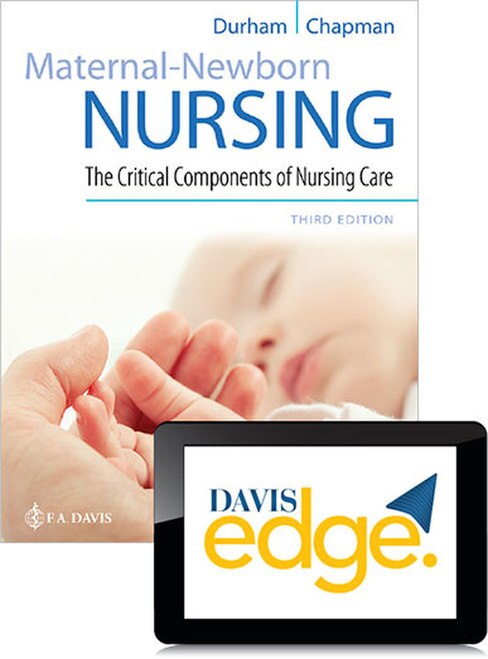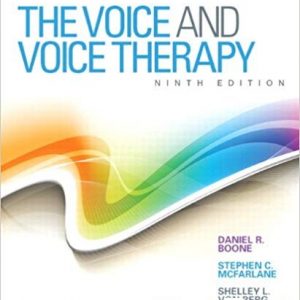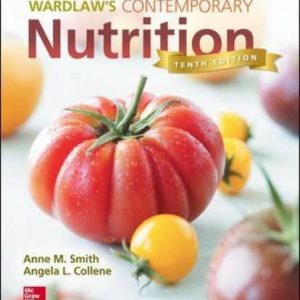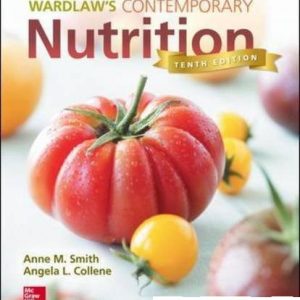Test Bank Maternal-Newborn Nursing The Critical Components of Nursing Care 3rd Edition Roberta Durham

Product details:
- ISBN-10 : 0803666543
- ISBN-13 : 978-0803666542
- Author: Davis
Davis Advantage for Maternal-Newborn Nursing combines an easy-to-read textbook with an innovative online program to create an immersive, multimedia learning experience that focuses on must-know information to meet the needs of today’s students and instructors.
An access code inside new, printed textbooks unlocks an eBook, as well as access to Davis Advantage. Or choose the all-digital Instant Access option, which includes the eBook and immediate access to Davis Advantage.
Description:
Chapter 1: Trends and Issues
Multiple Choice
Identify the choice that best completes the statement or answers the question.
____ ; The nurse is caring for a patient who is in labor with her first child. The patient’s mother is present for support and notes that things have changed in the delivery room since she last gave birth in the early 1980s. Which current trend or intervention may the patient’s mother find most different?
| 1. | Fetal monitoring throughout labor |
| 2. | Postpartum stay of 10 days |
| 3. | Expectant partner and family in operating room for cesarean birth |
| 4. | Hospital support for breastfeeding |
____ ; A patient with a history of hypertension is giving birth. During delivery, the staff was not able to stabilize the patient’s blood pressure. As a result, the patient died shortly after delivery. This is an example of what type of death?
| 1. | Early maternal death |
| 2. | Late maternal death |
| 3. | Direct obstetric death |
| 4. | Indirect obstetric death |
____ ; The nurse is providing education to a patient who has given birth to her first child and is being discharged home. The patient expressed concern regarding infant mortality and sudden infant death syndrome (SIDS). The patient had an uncomplicated pregnancy, labor, and vaginal delivery. She has a body mass index of 25 and has no other health conditions. The infant is healthy and was delivered full-term. What will be most helpful thing to explain to the patient?
| 1. | Uses of extracorporeal membrane oxygenation therapy (ECMO) |
| 2. | Uses of exogenous pulmonary surfactant |
| 3. | The Baby-Friendly Hospital Initiative |
| 4. | The Safe to Sleep campaign |
____ ; The nurse is caring for a 14-year-old patient who is 32 weeks pregnant. After complaining of genital sores and discomfort, the patient tests positive for syphilis. The fetus is at increased risk of which condition?
| 1. | Diabetes |
| 2. | Blindness |
| 3. | Pneumonia |
| 4. | Hypertension |
____ ; The nurse is caring for a 15-year-old female who is pregnant with her first child. In her previous prenatal visit, the patient tested negative for chlamydia, syphilis, gonorrhea, and HIV. Based on the information provided, which condition is the patient’s baby at higher risk for?
| 1. | Intestinal problems |
| 2. | Neonatal conjunctivitis |
| 3. | Blindness |
| 4. | Pneumonia |
____ ; The nurse is caring for a 23-year-old patient who arrives at the clinic for a pregnancy test. The test confirms the patient is pregnant. The patient states, “I do not need to stop smoking my electronic cigarette because it will not harm my ; Which is the best response by the nurse?
| 1. | “You are correct. Electronic cigarettes are not harmful during ; |
| 2. | “Tobacco products, including electronic cigarettes, should not be used during pregnancy due to risking nicotine ; |
| 3. | “According to the FDA, although electronic cigarettes are safe for you, they can cause harm to the fetus during ; |
| 4. | “Electronic cigarettes are considered harmful only in the first ; |
____ ; The nurse is caring for a 16-year-old patient who is 32 weeks pregnant with her first child, who is male. The patient’s mother has accompanied her to today’s visit. During the nursing assessment, the patient mentions that she is no longer in a relationship with the baby’s father but her mother plans to help her. However, the patient’s mother asks whether this will have any impact on the child. Which should the nurse indicate the child is at increased risk of during his adolescence?
| 1. | Hypertension |
| 2. | Diabetes |
| 3. | Alcohol abuse |
| 4. | Intraventricular bleeding |
____ ; The nurse is caring for a patient at 7 weeks gestation. The nurse suspects that a pregnant patient may have been using marijuana. With consent, the nurse confirms via urine drug screen. Which statement by the nurse is most appropriate?
| 1. | “Did you smoke marijuana when pregnant with your other child?” |
| 2. | “To avoid negative effects on your baby, you’ll need to stop using marijuana during your last ; |
| 3. | “Using marijuana while pregnant can have a negative effect on the neurological development of your ; |
| 4. | “Marijuana use while pregnant greatly increases your risk of ; |
____ ; The nurse is counseling a female patient about alcohol use during pregnancy. Which statement by the patient demonstrates successful patient teaching?
| 1. | “I will limit my drinking to just one alcoholic beverage per ; |
| 2. | “It’s best for my baby if I avoid drinking during ; |
| 3. | “An occasional drink on special occasions is ; |
| 4. | “Drinking alcohol is only acceptable in the first ; |
____ ; The nurse is educating the pregnant patient with a body mass index (BMI) of 33. The nurse knows that teaching has been effective when the patient states which of the following?
| 1. | “My child may be at increased risk for birth ; |
| 2. | “My child may have a decreased risk of developing childhood ; |
| 3. | “I will probably give birth ; |
| 4. | “I have a lower risk of developing gestational ; |
____ ; A pregnant woman weighs kg. The nurse is educating the patient on complications that the patient may be at risk for during pregnancy. Which response by the patient indicates that she understands?
| 1. | “Due to my weight, there is a possibility that I may develop gestational ; |
| 2. | “I am not overweight, but I am still at risk for gestational ; |
| 3. | “My mother had preeclampsia during one of her ; |
| 4. | “I will need to do a glucose tolerance test in my second ; |
____ ; The nurse is taking a history of a mother who admits to cocaine drug use. Which action should the nurse take first?
| 1. | Refer the patient to a drug abuse program. |
| 2. | Screen the infant for side effects associated with cocaine use. |
| 3. | Educate the patient of the risks associated with cocaine use during pregnancy. |
| 4. | Advise the patient that her baby will be okay even with the history of cocaine use. |
____ ; A pregnant patient with a BMI of 35 is concerned about health effects she and her baby may face during pregnancy. During routine testing, the patient tested negative for sexually transmitted illnesses (STIs) and indicated that she is in a committed, long-term relationship with the child’s father. Which of the following is accurate?
| 1. | The patient’s infant is at increased risk of neonatal blindness. |
| 2. | The patient’s infant has a decreased risk of birth injury. |
| 3. | The patient will have increased risk of wound infection. |
| 4. | The patient will have a decreased risk of preeclampsia. |
____ ; The nurse has made it a goal to increase the rate at which women begin prenatal care in the first trimester. The nurse relates this decision to national goals for better maternal and infant outcomes. What guidelines will the nurse use to guide her maternal health goals?
| 1. | WHO Maternal care guidelines |
| 2. | State Practice Acts |
| 3. | AWHONN white papers |
| 4. | Healthy People 2020 |
____ ; A nursing student is asked to set goals that will decrease the fetal death outcomes during delivery. What guidelines will the nursing student use to assist in setting her goals?
| 1. | WHO Maternal care guidelines |
| 2. | Healthy People 2020 |
| 3. | AWHONN white papers |
| 4. | State Practice Act |
Multiple Response
Identify one or more choices that best complete the statement or answer the question.
____ ; A woman has recently given birth to an infant born at 35 weeks and 5 days gestation. What long-term effects should the nurse be concerned about with the infant being born at this gestation? Select all that apply.
| 1. | Cerebral palsy |
| 2. | Respiratory disorders |
| 3. | Developmental delays |
| 4. | Visual impairments |
| 5. | Hearing impairments |
____ ; An infant was recently born weighing 1,498 grams. The nurse understands that the birth weight of this infant is an important indicator of what? Select all that apply.
| 1. | Morbidity rate |
| 2. | Prenatal care |
| 3. | Mortality rate |
| 4. | Infant health outcome |
| 5. | Postpartum care |
____ ; The nurse is taking the history of a gravida 2 para 1 patient. Which findings in the patient’s history warrant further action? Select all that apply.
| 1. | Anemia |
| 2. | Severe hemorrhage |
| 3. | Infections |
| 4. | Malnutrition |
| 5. | Eclampsia |
____ ; A nurse is caring for a single teen mother who has just given birth to her first child. The patient notes that the child’s father “wants no relationship with his ; The patient goes on to express concerns about the short- and long-term impact of her teen pregnancy on herself and on her child. Which statements made by the nurse are accurate? Select all that apply.
| 1. | “You are more likely than others to have additional children before you turn ; |
| 2. | “You may have difficulty completing high school or ; |
| 3. | “Your child is less likely to experience behavioral ; |
| 4. | “Your child is at increased risk of abusing alcohol when he is a ; |
| 5. | “You may not earn enough money to independently support yourself and your ; |
____ ; The nurse is caring for a woman who is pregnant. The patient reports that she has also smoked less than five cigarettes per day and that she has continued to smoke during her pregnancy. Routine prenatal examination and diagnostics have indicated she tested negative for sexually transmitted infections and has a BMI of 25. Based on statistics, which is likely true about the patient and the developing fetus? Select all that apply.
| 1. | She will breastfeed her infant. |
| 2. | She is probably aged 20–24. |
| 3. | She likely has earned a college degree. |
| 4. | Her child may have impaired brain development. |
| 5. | Her child is more likely to be born prematurely. |





